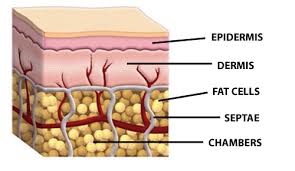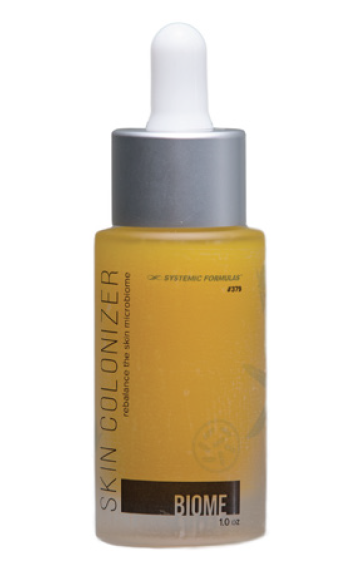Our skin is a direct reflection of our inner world to the outer world. The skin is composed of 3 layers, the outer layer acting as a barrier to the outside world, the middle layer housing all your hair follicles and sweat glands, and the deepest inner layer with your connective tissue and of course fat. This inner layer, the hypodermis, is going to be the focus of this article to give you a better understanding of how your hormones, your diet, and most importantly your toxins are influencing the health of your skin.
This layer the hypodermis houses our adipocyte cells, our fat storage cells. The cells behave according the communication they receive from certain hormones like Insulin, Glucagon, Estrogen, Testosterone, and Leptin, just to name a few. The purpose of this storage mechanism is one for protection and for safe keeping in times where food may not be available. This is where the ancient healing practice of fasting has taught us how to create adaption in the body so we can utilize and mobilize unwanted fat around our organs for energy rather than storage.

Our body has some innate intelligence that is always working for us. The layer of adipose tissue directly responds to the energy demands of the body. Now in our previous articles and webinars we have emphasized the importance of cell detoxification to give our powerhouse cell, the mitochondria the opportunity to create energy, however if the adipocytes are accumulating toxins it is harder to utilize the energy that these tissues can provide.
This layer is also involved in immune function and helping prevent infections. A study conducted in 2015 at the University of California, discovered the role that this layer plays in protecting the skin from bacteria.

Staphylococcus Aureus is a common bacterium that causes skin infections, especially in young children. The amazing thing is that the moment there is a Staph infection, the fat cells in the hypodermis layer of the skin will begin to produce antimicrobial substances called, Cathelicidin Antimicrobial Peptide, cAMPS, to help kill the invasive bacteria. Although these peptides are protective, chronic skin infections, even atopic dermatitis (eczema) can increase the number of these cAMPs chronically eventually leading to autoimmune conditions such as Psoriasis.
So what does this mean for us and our skin? Below are a few things you can incorporate to make sure you are nourishing that layer of fat and keeping it at optimal levels not only for energy but for protection again infections.
1. Block Fasting and Intermittent Fasting
Getting into a Ketosis helps the body utilize the fat we have stored as fuel and energy.

2. Omega 6 vs Omega 3
There is a lot of information out there on the benefits of Omega 3 and its anti-inflammatory properties. However, the skin is more reliant on Omega 6 for optimal health and healing. Not all inflammation is bad. When needing to heal the skin needs more Omega 6 to convert into arachidonic acid for the healing mechanism of the skin to turn on. Good sources and a balanced ratio of these oils can come from both Pure Form Omega and Andreas Seed Oil Blends.
3. Topical Probiotics
Feed the skin what it needs through topical skin colonizer. Replenish the good bacteria and strengthen the fat layer’s immune response. Your skin will thank you!


